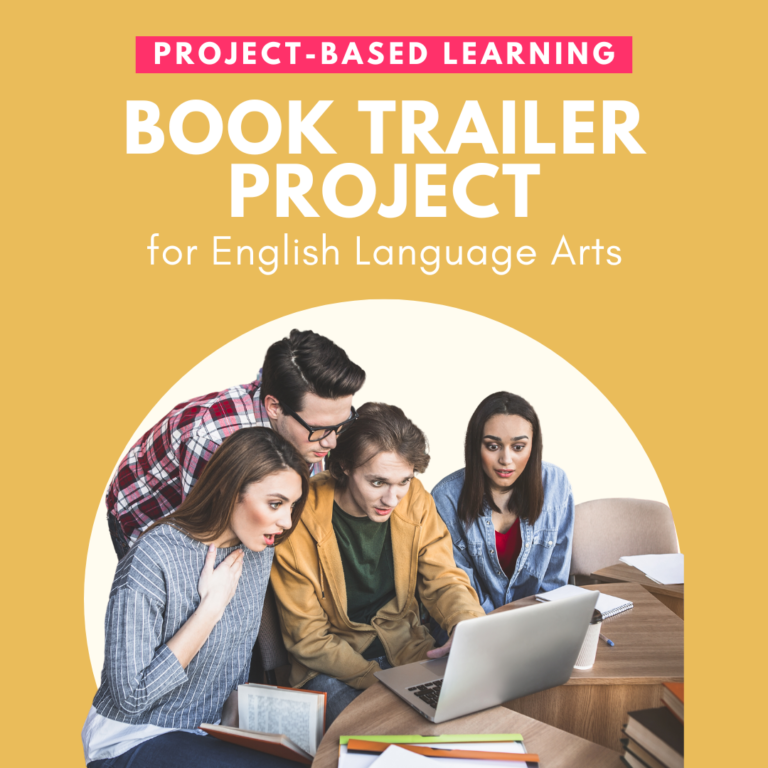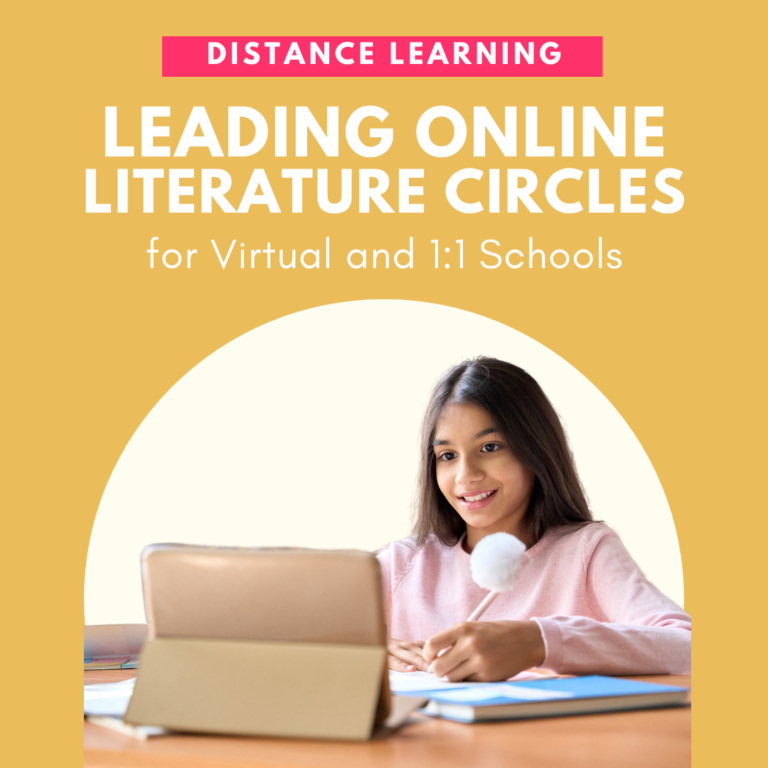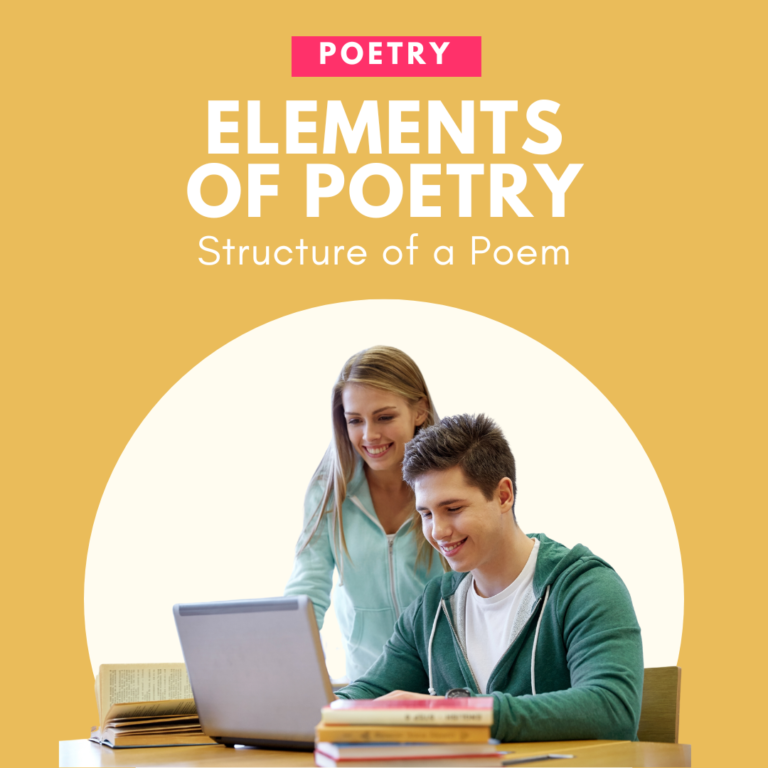In modern education, the shift towards real-world learning is more important than ever, and authentic learning is at the forefront of this transformation. It blends traditional classroom learning with real-life experiences, making education more engaging and relevant for students. Through this blog post, we’ll explore how authentic learning effectively connects classroom theory with the practicalities of the real world.

What is authentic learning?
Authentic learning is an educational approach where students engage in real-world, meaningful activities that mirror the complexities and interconnectedness of life outside the classroom. This method immerses students in deeper learning experiences that are rooted in practicality and relevance.
At its core, authentic learning involves tackling problems or projects that demand creativity, critical thinking, and active participation. It’s about stepping beyond the theoretical and textbook scenarios and diving into tasks that resonate with the world students live in and will eventually work in. This approach not only ignites a student’s curiosity but also enhances their ability to apply what they learn in tangible, impactful ways.
Authentic learning also emphasizes the importance of reflection and self-evaluation. Students are encouraged to contemplate their learning journey, understand their strengths and areas for improvement, and adapt accordingly. This nurtures a sense of self-awareness and responsibility towards their own learning process.
Furthermore, authentic learning often involves collaborative efforts, mirroring the teamwork and communication skills vital in most professional and personal scenarios. By working with others, students learn to negotiate, share ideas, and value diverse perspectives.

What are some examples of authentic learning?
Authentic learning opportunities range from project-based learning assignments to internships to community involvement projects. Whenever students are using real-world problem solving skills, simulating professional scenarios, or accumulating work experience, they are practicing authentic learning.
In this blog post, I’ve brought together some of your favourite teacher-authors to share 8 real-world learning activities with you!
1. Classroom Mock Trials for Authentic Learning
A mock trial is a simulated legal proceeding designed to mimic the format and procedures of an actual trial in a courtroom setting. Typically used as an educational tool, a mock trial involves students taking on roles such as attorneys, witnesses, and a judge to explore and analyze legal issues, practice courtroom skills, and engage in critical thinking.
Classroom mock trials can be based on a real case or a fictional scenario. In the English classroom, mock trials provide a fantastic project-based learning opportunity for several short stories and novels. Mock trials also allow individuals to understand the workings of the legal system, develop advocacy skills, and gain insights into the complexities of legal proceedings.
One of the incredible features about classroom mock trials is that they naturally lend to differentiated instruction. With so many mock trial roles to explore, you can find the perfect assignment to accommodate and include every student in your classroom.
To learn more about facilitating a mock trial in your classroom, check out this blog post!
2. UN Global Goals Mini-Project
This authentic learning opportunity is all about overcoming the world’s challenges.
As all great teachers know, building bridges for students between the classroom and the real world is essential to meaningful learning. And Hey Natayle has a profound way to do it: she has her students dig into the UN’s Global Goals while sharpening their researching chops.
To launch the unit, Natayle starts with a simple task: watch the first 20 minutes of Wall-E. She has students jot down all the questions that pop up while they watch. This gets the kids thinking about everything from the environment to social responsibility, AKA a journey into critical inquiry.
Linking Wall-E’s story to the real world, Natayle hosts an eye-opening gallery walk to introduce students to the United Nation’s 17 Global Goals. After exploring all of the goals, each student chooses a goal for their research project. Whether they look into the realities of world hunger or understand the importance of access to clean water and healthcare, they get a real world perspective on pressing issues.
The best part? This project isn’t just about checking off a few writing standards. Natayle’s students really get exposure to huge global issues, sparking more conversations about the world we live in and the changes we all need to make to overcome major challenges. Talk about “real world” learning!

3. Authentic Learning for “Coffee and Donuts” Current Events
Language arts classrooms oftentimes make space for sustained silent reading or comfy independent reading time, but what about switching that time for checking in with current events?
Amanda from Mud and Ink Teaching does just that, and she calls this authentic learning opportunity “Coffee and Donuts” time. The coffee is optional, but the Donut is actually what is centre-stage! If you haven’t checked it out yet, it’s about time you started reading your daily Donut: a newsletter-style email with multiple perspectives about current events.
For a few selected weeks, Amanda has students replace their quiet novel reading time with time to browse through the latest issues of The Donut. She details her whole plan and even has a free handout to use with students on her blog right here!
4. Examining Media Bias
Like Amanda, Lesa from SmithTeaches9to12 loves to include current events in her classroom and to use the Donut! Throughout the year, students read the news in online newsletters, websites, and even old-fashioned print versions! To complement these activities, Lesa incorporates key lessons about the structure and content of media, including the presence of bias.
Being more media literate is integral in this day and age of fake news, clickbait, and rumor-turned-breaking news. Spending some time focused on a variation of the 5Ws can help students investigate the reliability of news:
- Who is telling the story?
- What message is being ‘pushed’ in the article?
- Where does the article appear – which publication? (Using this AdFontes media chart can help with some interpretation.)
- When was this published? Is the timing relevant? Is it super close to an event’s ending that doesn’t allow much time for interpretation? Is it placed at a time to influence and how so?
- Why was this article published?
Looking for a lesson all about media bias? Check out this ready-made resource to walk students through 8 different types of media bias and then apply their knowledge with a news analysis activity.
5. Authentic Learning for Social Justice
Katie from Mochas and Markbooks knows that music is a powerful tool for teaching about social justice issues in the classroom. It can help students understand and connect with important issues in a way that is both engaging and memorable. Music can be used to teach about a wide variety of social justice issues, such as racism, sexism, and poverty.
One way to use music in the classroom is to analyze the lyrics of songs that address social justice issues. Students can listen to the song and then discuss the meaning behind the lyrics. They can examine the language used in the song and how it contributes to the message. This can help students develop critical thinking skills and become more aware of the issues around them.
Another way to use music is to have students create their own songs that address social justice issues. This can be a fun and creative way for students to express their ideas and opinions. They can work in groups or individually to write lyrics and compose music that reflects their understanding of the issue.
Music can also be used to inspire action. Students can listen to songs that address social justice issues and then brainstorm ways to take action and make a positive change in their community. This can help students feel empowered and motivated to make a difference in the world.
If you want to include music with a social message in your classroom but aren’t sure where to start, check out Songs for Social Change for links to 60 socially-minded music videos and accompanying discussion questions. You can also check out this blog post for more ideas!
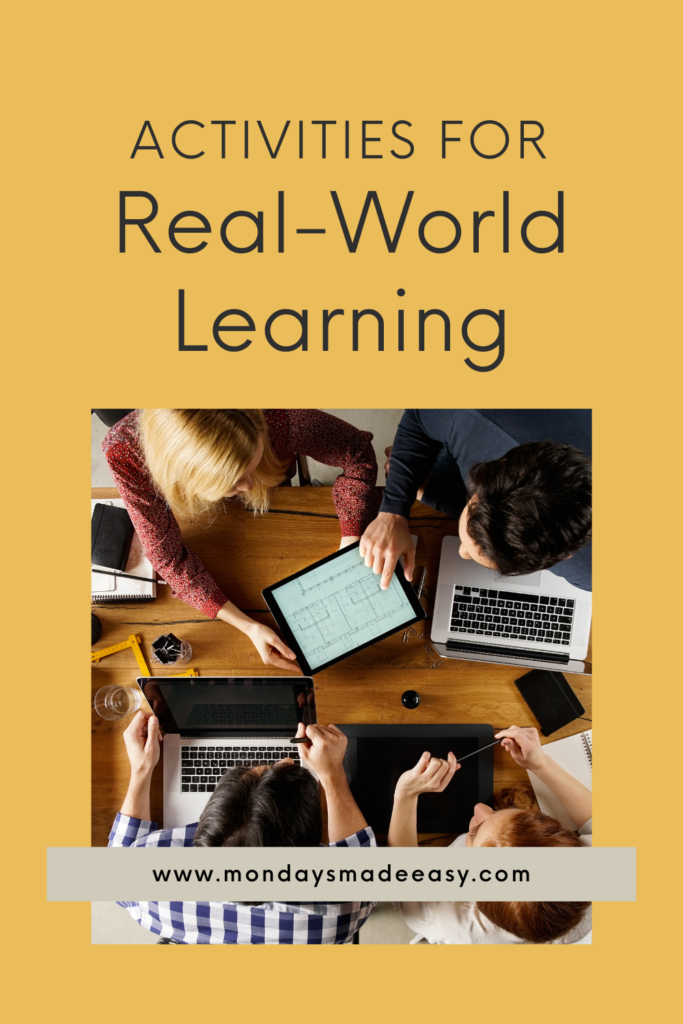
6. Using Podcasts to Discuss Current Events
Kristy from 2 Peas and a Dog likes to connect her language arts classroom to the real world by integrating podcast segments into her lessons.
Students benefit from learning about current events and the outside world in a classroom where they can get accurate information from valid sources. Students need explicit lessons on media awareness, bias, perspective and fake news. These can be taught through the use of podcast segments.
Kristy subscribes to a variety of current event podcasts and skims the episode titles to see if any might be of interest and relevant to her students.
Below is a suggest list (not exclusive or exhaustive) of non-fiction podcasts that can be reviewed each week to see if the topics align to your lessons/curriculum.
Podcast Suggestions:
- KidNuz
- The Current (CBC Radio One)
- The Daily (New York Times)
- Cost of Living (CBC Radio One)
- Front Burner (CBC Radio One)
- This American Life
The podcast KidNuz is a great way to start your class if you are looking for a warm up activity. Each episode is about 6 – 7 minutes long and contains many short segments about current events. At the end of the episode they have a quick comprehension quiz which your students can take. Kristy uses it with her middle school students to keep them informed of interesting student-friendly current events.
If you want to start using podcasts in your classroom, download this free podcast lesson about subscription boxes that you can use with your classes to get them discussing this popular shopping model.
7. Nonfiction Text Activities for Authentic Learning
In today’s fast-paced world, students need to be exposed to real-world scenarios that they can relate to. Samantha from Samantha in Secondary is a huge advocate for using nonfiction text in the classroom. Teachers can accomplish this by incorporating nonfiction texts into their curriculum as often as possible. Nonfiction texts provide a wealth of information on current events, scientific discoveries, and historical events.
Pick topics that pair with the text being studied in class. For example, “The Crucible” by Arthur Miller could be paired with an article on cancel culture and Fahrenheit 451 by Ray Bradbury could be paired with an article on censorship. Websites like CommonLit and Newsela provide paired text sets to help you find articles for tons of specific texts.
Samantha has an arsenal of nonfiction texts ready to print and use in your own classroom in her shop. You’ll find tons of topics such as haunted places, sports players, biographies of famous historical figures, and more. Click here to see what she has to offer.
Students who study nonfiction texts learn how to analyze information, make informed opinions, and form arguments based on facts. They learn about the world beyond the classroom, and how it affects them. By using nonfiction texts, teachers can empower students to make informed decisions, not only in the classroom but in their daily lives. This ultimately prepares them for success in their future careers and as responsible citizens.
8. Authentic Learning through Theme Connections
One of the greatest beauties of literature is the universal themes that can help students connect, empathize, and see life experiences in new perspectives.
Whether it be in short stories, novels, or poems, themes that can be used to make text-to-text, text-to-self, or text-to-world connections are abundant.
Ana from Simply Ana P. suggests not only using themes to frame essential questions, but also to drive student discussions, particularly in seminars.
There’s a multitude of seminar types, but Ana most enjoys a mix of Socratic and Paideia seminars. She has done several with her own students and created some for her teacher clients as well.
For each seminar, students read a final supplemental text for the unit and complete pre-seminar questions to get them in the right mindset for the following day. Then, the day of seminar, the entire class sits in a leveled circle and the teacher acts as a facilitator, moving the class through questions while they discuss with each other.
Below is an example of seminar questions for a unit where students read several historical texts, watched The Woman King, and Hamilton. Identity and the pursuit of freedom were essential themes.
Notice how several questions relate directly to the content they covered, but other questions connect the themes to broader questions and ideas that help students critically think and connect to themselves and the world.
Here is another example of seminar questions from a mashup unit of Frankenstein and Punching the Air.
Through the lens of universal themes, literature becomes a dynamic tool, empowering students to not only decipher the narratives on paper but to unravel the complexities of their own stories and the big, messy world around them.
If you need help crafting seminars for your units, Ana provides teacher coaching services here.
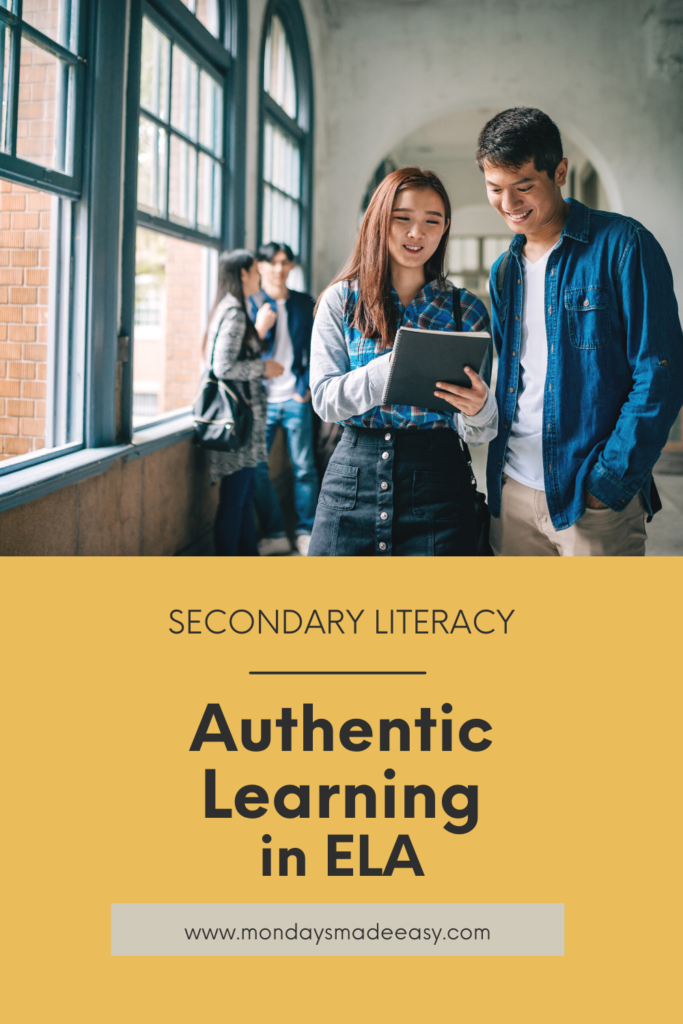
Authentic Learning: Tying it All Together
As we conclude, it’s clear that authentic learning is a vital bridge between classroom education and real-world experiences. It not only enriches students’ understanding but also prepares them for the practical challenges they’ll face outside school walls. Embracing this approach ensures that our teaching remains relevant, engaging, and deeply connected to the real world.
For more authentic learning ideas, check out this blog post on project-based learning opportunities.

